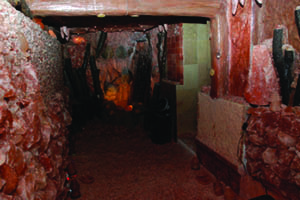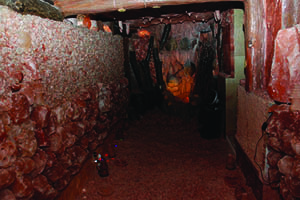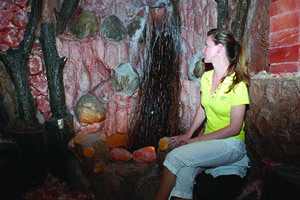Saltcave











Salt therapy was discovered in the mid 18th century by Polish health official named Felix Botchkowski.
Salt therapy was originally discovered as Speleotherapy or cave therapy, 'Spelenos' being the Greek term for 'cave'.
Felix Botchkowski found that salt miners in Poland had not experienced lung-related ailments such as asthma, pneumonia, or chronic bronchitis.
Even miners who had respiratory disease before they began working in the mines felt better and had fewer symptoms as they spent more and more time in the caves.
Felix Botchkowski published a book in 1843 on his findings. His predecessor Mstislav Poljokowski founded the first Salt Spa in Velicko, which is still in operation today.
Speleotherapy is the treatment of respiratory diseases, as well as some skin diseases, utilizing salt-rich air in underground caves.
Natural salt microns and ions have been proven effective in calming an agitated respiratory track. Salt has a natural anti-inflammatory effect;
it reduces swelling and edema in the air passages, making it less difficult and less painful to breath. Inhaling the salt-saturated air destroys fungus and bacteria in
the mucosal lining of the respiratory tract. Breathing the salted air thins the mucous in the lungs so it is more easily expectorated. It has also being proven to remove
remaining tar from the lungs of smokers. The salt ions produce a negative electrical charge in the air, which improve mood, reduce stress and anxiety, decrease fatigue,
and have many other curative effects. During a treatment, the patient is allowed to relax in the salt cave for the duration of the session. Each session last from twenty to
forty five minutes, and is repeated daily for up to fifteen days. Treatments are recommended up to three times per year. Speleotherapy treatments are typically not private;
patients usually can share a treatment cave with as many as thirty other individuals. Outside the caves, salt therapy is called Halotherapy. It comes from the Greek word 'halos',
a term meaning 'salt'. Halotherapy is essentially a replication of Speleotherapy, using a dry aerosol spray to coat the walls and ceiling of a room. Man-made salt rooms allow the
opportunity for a private session, but larger salt room are built to accommodate many more patients. Speleotherapy and Halotherapy have been effective in reducing symptoms in many areas of health.
Although treatments are most used to remedy lung-related disorders, salt has also been used to care for skin conditions, anxiety, stress, ENT illnesses, and has been utilized to improve the immune system.